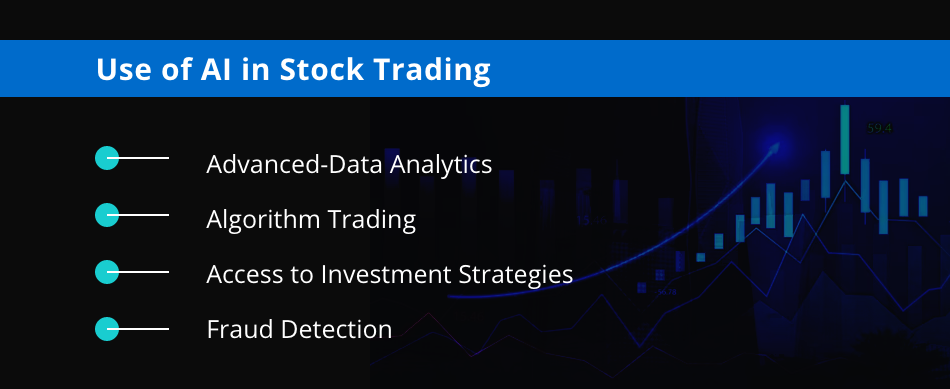20 Pro Advice On Choosing AI Stock Investing Platform Websites
20 Pro Advice On Choosing AI Stock Investing Platform Websites
Blog Article
Top 10 Tips To Assess The Strategy Customization Of Ai Trading Platforms
AI trading platforms that predict/analyze stocks are well-known for their ability to tailor strategies to meet the needs of the users. This lets them adjust to specific goals and conditions, which includes risk tolerance. A platform that offers flexible options for customization can dramatically enhance your trading effectiveness. Here are the 10 best tips for evaluating the customization options offered by these platforms.
1. Evaluate Pre-Built Strategy Templates
Variety of templates. Make sure the platform offers a broad range of strategies pre-built for different trading types (e.g. day trading, swing trading, or long-term investment).
You can easily modify the templates and adapt them to your specific needs.
Performance history: Confirm that the platform has previous data on performance that can be used to create already-built strategic plans.
2. Assess the effectiveness of Custom Strategy Creation
Drag-anddrop tools: Look out for platforms that offer user-friendly drag and drop interfaces to allow you to personalize strategies.
Check the platform's coding options. For advanced users, it may be beneficial to utilize custom scripting language (e.g. Python or R).
Flexibility. Be sure to define key components such as the parameters for risk management, entry and exit regulations, as well as any other elements that make up your plan.
3. Check for Backtesting Capabilities
Historical data: Make sure that the platform has enough historical data available to backtest strategies.
Customizable parameters - Ensure that you have the ability to change parameters (e.g. timeframes, indicator) while backtesting.
Performance metrics: Check whether the platform has specific performance metrics that can be used to backtest strategies (e.g. win rate sharpe ratio drawdown).
4. Evaluate Real-Time Strategy Testing
Paper trading Strategies can be tested in real-time using paper trading or simulation.
Live testing: Determine if you are able to test your strategies on real markets using small amounts capital.
Real-time adjustments: Determine whether it is feasible to adjust strategies according to the current market conditions.
5. Assessment of Integration using Technical Indicators
Libraries for indicators: Make sure the platform includes a complete toolkit for technical analysis (e.g. MACD, RSI and moving averages).
Custom indicators. Ensure that you have the ability to develop or utilize custom indicators in your strategy.
See if you are able to combine several indicators to make more complicated strategies.
6. Check for Risk Management Tools
Stop-loss/take-profit: Ensure the platform allows you to set stop-loss and take-profit levels within your strategies.
Position sizing: Find out whether you're able to define rules for position sizing (e.g. the amount that is fixed or a percentage of portfolio) in order to manage the risk.
Rate of risk-reward: Check if the platform allows setting specific risk-reward rates for strategies or individual trades.
7. Evaluate Multi-Asset Strategy Support
Asset Classes: Ensure that the platform supports strategies from multiple asset classes (e.g. ETFs, Options, Forex and Stocks).
Cross-asset Strategies: Determine whether it is possible to create strategies that mix various asset classes.
Market coverage. Check if the platform has market coverage that you are looking to invest in (e.g. US international, copyright).
8. Evaluate Automation and Execution
Automated trading. Check if the platform allows automated execution based on predefined strategies.
Types of orders: Examine to see if the platform permits different order types (e.g. limit and market) when executing a strategy.
Latency - Test the platform's capability to perform trades promptly particularly when you are using high frequency strategies.
9. Take a look at the Strategies Optimization Tools
Parameter Optimization: Make sure that the platform has tools for optimizing the parameters of strategies (e.g. genetic algorithms grid search, genetic algorithms).
Machine Learning Integration: Find out if a platform integrates machine-learning to optimize and refine the strategy.
Scenario analyses: Verify whether the platform lets you test different strategies in various market scenarios (e.g. bear, bull, volatile).
Review User Comments
User feedback is important to assess the performance of the platform.
Forums for community members: See whether you can find forums where members discuss and share their custom strategies.
Support resources - Ensure that the platform provides tutorials and documentation for users to create and improve strategies.
Bonus Tips:
Trial period: Take advantage of a free trial or demo to test the platform's strategy and customization capabilities.
Scalability: Your platform should be able to accommodate increasingly complex trading strategies as they evolve.
Support for customers: Find out whether the platform has support for strategy-related issues or concerns.
If you follow these guidelines, you can effectively assess the strategy customization capabilities of AI trading platforms that predict and analyze stocks Be sure to select the right platform that is compatible with your objectives in trading and lets you develop and improve your strategies in a way that is efficient. A platform that has robust customization features can enable you to be flexible to changing market conditions and enhance your trading performance. View the top look at this for best ai for trading for site advice including ai trading tools, chatgpt copyright, ai investment platform, stock ai, ai investing platform, chart ai trading assistant, ai for stock predictions, ai for investment, best ai trading software, ai stock and more.
Top 10 Tips On Assessing The Maintenance And Updates Of Ai Stock Predicting/Analyzing Trading Platforms
The regular updates and maintenance of AI stock prediction and trading platforms are critical for ensuring they remain effective, safe, and in alignment with the ever-changing market conditions. These are the top ten guidelines for evaluating updates and maintenance procedures:
1. Updates Frequency
Check how often updates are released (e.g. each week, monthly or quarterly).
Why: Regular updates are an indication of active development and an ability to adapt to changes in the market.
2. Transparency of Release Notes
Tips: Read the platform's release notes to understand what modifications or enhancements are in the works.
Transparent release notes indicate that the platform is committed to continuous improvements.
3. AI Model Retraining Schedule
Tip: Ask what frequency AI models are trained on new data.
Why: Models must evolve to be accurate and current as markets change.
4. Bug fixes and Issue resolution
Tips - Check the speed with which the platform resolves bugs and technical issues.
The reason: Quick fix for bugs ensure that the platform remains reliable and usable.
5. Updates on security
TIP: Check that the platform is constantly changing its security procedures to safeguard the data of users and trade activity.
Why is it important? Cybersecurity is essential on financial platforms to protect against fraud.
6. Integrating New Features
Check the platform to see whether it has recently added new features based on market or user feedback (e.g. improved analytics).
The reason: New features show responsiveness and innovation to user demands.
7. Backward Compatibility
Tip: Ensure the upgrades you install do NOT need major reconfigurations or interrupt the functionality of your current system.
Why is that? Backward compatibility is essential to provide a smooth user interface during transitions.
8. Communication with users during maintenance
Take a look at the method by which your platform notifies users of scheduled maintenance or outages.
Clare communication reduces interruptions and increases trust.
9. Performance Monitoring and Optimization
Tips - Make sure that the platform continually monitors metrics of performance (e.g. precision, latency) and improves the performance of systems.
Why: Ongoing platform optimization ensures that it is efficient and scaleable.
10. Conformity to Regulatory Changes
Tips: Make sure to check if your platform is updated with the most recent technologies, policies and laws regarding privacy of data or the latest financial regulations.
What's the reason? To reduce legal risks and keep user confidence, compliance with the regulatory framework is crucial.
Bonus Tip User Feedback Integration
Check if the platform actively incorporates user feedback into its maintenance and updates. This indicates a focus on the customer to improving.
By evaluating these factors to ensure that the AI-based stock prediction and trading platforms that you select are regularly maintained, updated, and able to adapt to the changing dynamics of markets. Take a look at the most popular free ai tool for stock market india for more tips including stock predictor, how to use ai for copyright trading, ai copyright signals, stock trading ai, ai in stock market, stock predictor, investing with ai, ai stock analysis, ai for trading stocks, stock predictor and more.